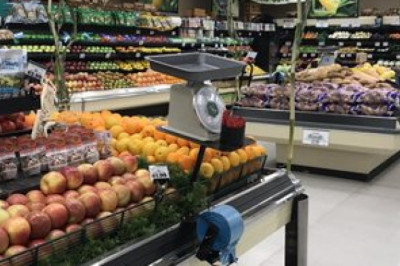views
The global barley market is experiencing a notable upswing, driven by robust demand across food, beverage, and feed industries. With expanded barley cultivation and innovation in barley-based products, the market is projected to grow steadily over the next decade.
According to the research report, the global barley market was valued at USD 22491.36 million in 2023 and is expected to reach USD 28,491.24 Million by 2032, to grow at a CAGR of 2.66% during the forecast period.
Market Overview
Barley, one of the earliest domesticated cereal grains, has retained its agricultural and economic importance across geographies. It plays a crucial role as a staple food, livestock feed, and a key ingredient in beer production. Its adaptability to various climates and soil types has made it a vital crop in both temperate and arid regions.
The increased use of barley-based products in food and beverage applications, along with barley's prominence in animal nutrition, has broadened its global market scope. In addition, innovation in barley breeding and digital agriculture practices is boosting productivity, thus supporting consistent market supply.
Market Segmentation
The barley market is segmented based on type, application, and end-use industry.
By Type:
-
Malting Barley: Used predominantly in the brewing and distillation industries.
-
Feed Barley: Used for livestock feed in poultry, swine, and cattle industries.
-
Food Barley: Used for human consumption in products such as flour, breakfast cereals, soups, and health snacks.
By Application:
-
Brewing: The largest market for malting barley.
-
Animal Feed: A significant segment, especially in regions with high meat consumption.
-
Food Industry: Rising due to barley’s nutritional profile and use in gluten-reduced products.
By End-Use Industry:
-
Beverage Industry
-
Food Processing
-
Agriculture (Animal Husbandry)
-
Nutraceuticals
Browse Full Insights:
https://www.polarismarketresearch.com/industry-analysis/barley-market
Country-Wise Market Trends
United States
The U.S. continues to be a major producer and consumer of barley, particularly in the barley malt industry. With over 9,000 breweries nationwide, the U.S. craft beer market drives significant demand for high-quality malting barley. Additionally, barley’s use in cattle feed, especially in the Midwest, supports its steady cultivation.
Canada
Canada is one of the world’s largest exporters of malting barley, with Alberta being a key production hub. Canadian barley meets the growing demand from Asian breweries, especially China and Japan. Canada’s cold-tolerant barley varieties and robust grain handling infrastructure contribute to its global competitiveness.
Germany
Germany remains a top consumer of malting barley due to its beer-centric culture and large number of breweries. The country prioritizes the quality of malting barley for its famed lagers and pilsners. Government support and research institutions play a critical role in barley breeding and sustainability in German agriculture.
France
As one of Europe’s leading barley producers, France caters to both feed and malting barley segments. The country also exports large quantities to North Africa and the Middle East. The French barley sector benefits from the Common Agricultural Policy (CAP) and growing demand for organic barley-based products.
United Kingdom
The UK’s barley market is deeply tied to its beer and whiskey industries. Scotland, in particular, demands high-grade malting barley for whiskey distilleries. With sustainability gaining importance, UK farmers are adopting regenerative agricultural practices for barley cultivation.
Australia
Australia is a leading exporter of barley, with over 70% of its production exported annually. China, Saudi Arabia, and Japan are major markets for Australian malting and feed barley. Barley is also a drought-resilient crop, making it ideal for Australia’s semi-arid regions. Strategic trade relationships and R&D are central to maintaining Australia’s global barley market share.
China
China is a major importer of malting barley, mostly from Australia and Canada, to support its expanding brewing industry. Domestic production is focused on food-grade barley for noodles, soups, and herbal beverages. Government subsidies aim to expand barley acreage and reduce reliance on imports.
India
India's barley market is growing steadily, driven by demand from both the feed grain market and domestic beer manufacturers. Rajasthan, Uttar Pradesh, and Punjab are leading states for barley cultivation. Indian breweries increasingly rely on local barley to reduce input costs and comply with "Make in India" mandates.
Argentina
Argentina is emerging as a significant barley exporter, with production focused primarily in Buenos Aires and southern provinces. Barley’s role in the feed market is increasing, supported by the country’s large livestock sector and proximity to Atlantic trade routes.
Russia
Russia has abundant land for barley cultivation and is one of the largest producers globally. The country supplies feed barley to the Middle East and North Africa. Domestic demand for barley as a feedstock remains high, especially in the swine and poultry industries.
Saudi Arabia
Barley is an essential feed crop in Saudi Arabia, where it's mainly imported due to unsuitable domestic growing conditions. Government programs are exploring sustainable feed alternatives, but barley remains vital for livestock, especially in rural regions.
Key Companies
Several global and regional companies shape the competitive landscape of the barley market. These players operate across the value chain—from seed development to malting, processing, and export.
1. Malteurop Groupe (France)
One of the largest malt producers globally, Malteurop operates in over 14 countries and provides malting solutions tailored to the brewing industry. The company actively collaborates with farmers to ensure traceable and sustainable barley supply chains.
2. GrainCorp Limited (Australia)
GrainCorp manages grain storage and logistics while also operating major malt production facilities. It serves both domestic and international clients, making it a key player in Australia’s export ecosystem.
3. Cargill Inc. (USA)
Cargill is a global agribusiness leader engaged in barley procurement, trading, and malt processing. Its vertical integration and R&D investments support advanced barley breeding and feed formulation.
4. Soufflet Group (France)
A leading European agribusiness, Soufflet specializes in collecting, storing, and processing barley, especially for malt production. The company’s emphasis on innovation and traceability enhances its competitiveness in high-value markets.
5. Axéréal (France)
As one of France’s largest grain cooperatives, Axéréal supplies feed and malting barley to processors and brewers across Europe. It also invests in sustainable agriculture programs and precision farming initiatives.
6. Viterra (Canada)
Viterra handles the procurement, storage, and export of barley, with strategic assets in North America. It plays a vital role in linking Canadian barley farmers to global brewing companies.
7. Boortmalt (Belgium)
Operating in over 20 countries, Boortmalt is one of the top maltsters worldwide. The company focuses on sustainability, traceability, and varietal diversification in barley sourcing.
8. Rahr Corporation (USA)
An independent, family-owned malt producer, Rahr Corporation supplies a wide range of specialty malts to craft and commercial brewers. Its integrated operations include barley breeding and agronomic research.
Conclusion
The global barley market is navigating a period of dynamic growth, shaped by evolving consumer preferences, technological advancements in farming, and expanding demand in the barley malt industry and feed grain market. As barley gains recognition for its nutritional and functional benefits, countries are scaling up barley cultivation and improving supply chain efficiencies.
With the brewing, food processing, and livestock industries poised for growth, stakeholders across the barley value chain—farmers, processors, and exporters—have significant opportunities to capitalize on rising global demand for barley-based products. Strategic investments, government support, and innovation will be critical to unlocking the full potential of this resilient and versatile crop.
More Trending Reports by Polaris Market Research:
Batter & Breader Premixes Market
Organic Food And Beverages Market
Ready To Drink Tea And Coffee Market
Savoring the Evolution: How Indian Food and Beverages Industry is Transforming
Ready-to-Drink Cocktails Market Companies: A Beverage Industry with Assorted Flavors




















Comments
0 comment